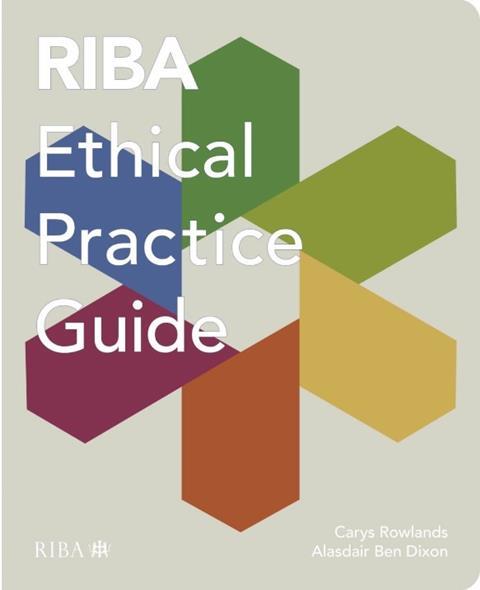Eleanor Jolliffe finds the latest in RIBA’s professional practice guides a stimulating, but at times frustrating, read

The RIBA Ethical Practice Guide is part of a series of guides the RIBA has recently published on key topics in contemporary professionalism. There is the Climate Guide, the Conservation Guide (to be released later in 2024), the Health and Safety Guide and the Principal Designer’s Guide. They are all written by experts in their respective fields and, I presume, designed to be read by busy professionals seeking to keep abreast of these key knowledge areas.
Carys Rowlands and Alasdair Ben Dixon are clearly embedded in ethical practice, and knowledgeable about the subject. Rowlands is a barrister (unregistered) who is head of registration and CPD at RICS, and former head of professional standards at the RIBA. Dixon is a practising architect, member of the Architects Declare steering group and co-ordinator of the Architects Climate Action Network; as well as having previously sat on the RIBA ethics and sustainable development commission.
Their expertise and passion for the subject are evident throughout the book - which is structured in six chapters covering an architect’s duty to the wider world, to society and the end user, to those commissioning services, to those in the workplace, to the profession, and to oneself. It does not claim to be comprehensive but I found it covered a great deal of ground, was obviously well researched, and at times very thought provoking.
I was particularly engaged by the ‘dilemmas’ at the end of each chapter which posed an ethical quandary to which there is no obviously correct answer - as there so rarely is in life. I spent a good deal of time pondering one about students undertaking pro-bono work for a charity and thus undercutting local architects. Does the good done outweigh the harm caused? The book wisely gives consideration to all sides of the argument but leaves the reader to form a final decision.
This is both the strength of the book and perhaps the difficulty of the subject. In ethical dilemmas there is often no ‘right’ or ‘wrong’ and as such it can be an unsatisfying thought experiment. There is no neat conclusion to ethical dilemmas except perhaps to do the least harm possible. The authors of this book wisely largely keep strong opinions out of the content and lay out the nuanced problems and positions facing the profession fairly dispassionately. Which is the correct thing to do in my opinion, but makes life more difficult for them. Readers of all genres enjoy a satisfying and certain conclusion, but the very subject matter prevents it here.
As the book unfailingly demonstrates, there are no ‘right’ or ‘wrong’ answers
Ethical practice is a difficult subject to write about both ethically and engagingly, and this is where I began to struggle with this book. It is full of excellent subject matter - but I occasionally struggled with its, at times, complex written style. It is my only real critique of what is otherwise a carefully written and useful book.
I would however, encourage anyone reading this to pick up a copy of this book - you will find it full of useful hints, tips and thought exercises that cannot fail to enrich your life in practice. ‘Ethics’ can be such a drag of a word - it even sounds worthy and dull - but the topics covered here could not be more important or full of life. They have the potential to enrich all areas of practice life from design and specification, to workplace culture. As the book unfailingly demonstrates, there are no ‘right’ or ‘wrong’ answers, and absorbing its content cannot fail to add knowledge and depth to the reasoning of your personal positions.
Postscript
The RIBA Ethical Practice Guide by Carys Rowlands and Alasdair Ben Dixon is published by RIBA Publishing
















No comments yet